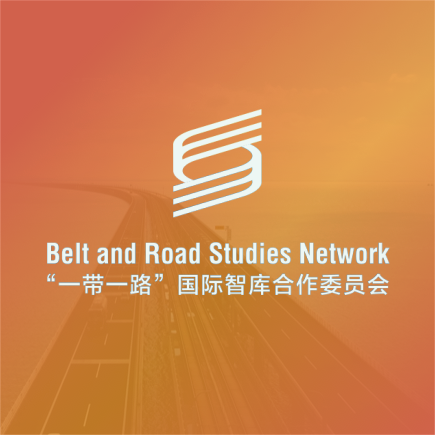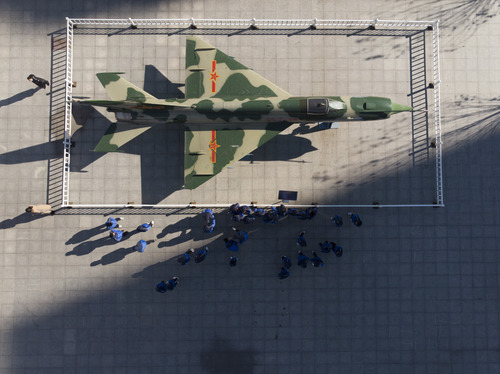

Amid considerable global turmoil in 2020, the relatively strong performance of the Chinese economy and continued commitment to defence budget growth contributed to the robust performance of Chinese defence state-owned enterprises (SOEs). While all Chinese firms in the Defense News Top 100 global defence companies list for the 2019 financial year ranked in the top 24, all seven SOEs ranked in the top 20 for 2020, suggesting a generally positive performance despite the impact of COVID-19 on China's economy in early 2020.
The IMF estimates that Chinese real GDP had recovered by the second quarter of 2020, with annual GDP growth reaching 2.3% in 2020 compared to a 3.3% contraction in global output, while IISS figures indicate that defence spending grew by 5.2% in real terms compared to 3.9% growth in global spending. Chinese SOEs focused on the aerospace domain generally saw revenue growth slow, while more diversified companies specialising in small arms, unmanned systems and advanced weapons performed well. As global trade slowed, companies with a diversified portfolio were in a good position to benefit when domestic demand turned inward.
The combined defence revenues of the Chinese SOEs in the Top 100 came to an estimated US$96 billion in 2020, growing by 7.3% compared to 2019. This figure dwarfs the combined total of all other Asian companies included in the list, including major entities in Australia, India, Japan and South Korea, which grew by 5.7% to reach US$22bn. The Chinese total is now comparable to the total defence revenues of all European defence firms on the Top 100 list whose combined revenues grew by just 2.5% to reach US$100bn in 2020.
Strong PLA demand fuels domestic enterprises
In this year’s list, Aviation Industry Corporation of China (AVIC) and China North Industries Group Corporation Limited (Norinco) held on to their number six and number eight positions in the global Top 100 ranking for a second year in a row. Both companies continue to enjoy strong demand from the People’s Liberation Army, as well as ongoing procurement in aircraft and land systems. However, both companies only showed relatively minor growth in revenue from 2019. AVIC only grew by 1.5% and Norinco revenue only grew by 3.1%.
The real shift in rankings was seen in armoured vehicles and light weapons manufacturer, South China Industries Group Corporation (CSGC), which saw a 20.5% increase in revenue between the 2019 to 2020 financial years. As a result, the group ranked 14th in the Top 100, up four places from last year. While the company has promoted internal restructuring and streamlining as reasons for revenue growth, these have resulted from changes made in line with SOE reforms only implemented in late 2020. The company’s successful 2020 financial performance is thus likely the result of a highly diversified portfolio, China’s post-COVID economic recovery and demand for the company’s civilian products. Despite a strong 2020 performance, CSGC has struggled in recent years with company revenues declining by 25% annually on average between 2017 and 2019. The 2020 growth is, therefore, not sufficient to return company revenues to 2016 peak levels. Considering the company’s previous woes, it will not be clear until the publication of next year’s company filings whether this recent success is part of a long-term trend or can merely be put down to a single good year.
Slowdown in global shipbuilding prompts industry reshuffle
This year’s list also includes the revenue for China State Shipbuilding Corporation Limited (CSSC), which formed after a ‘re-merger’ of China’s two largest shipbuilding SOEs in late 2019. Last year, a joint revenue figure of US$400bn was reported. However, this year’s financial filings – the first since the re-merger – indicated a 27.5% increase in revenue over the previous year’s estimate. Though it is too soon to tell for certain, the ranking at 11th place in the Top 100 is a positive early signal of the efficacy of the merger, as well as of collaborative agreements with other SOEs to enhance innovation, which are driven by Beijing’s ongoing maritime power ambitions.
CSSC’s leadership has stated that it intends to focus on innovation in strategic, cutting-edge and disruptive technologies, by strengthening the group’s basic- and key-technology research. Future growth will hinge on continued efficiencies and productivity improvements. CSSC has already reduced the number of subsidiaries from 147 to 113, while increasing assets from CNY790bn (US$115bn) to CNY840bn (US$123bn).
The re-merger was driven by a slowdown in global shipbuilding and is not a standalone example in the domain. AVIC divested its maritime assets in August 2019 to China Merchants Industry Investment, with the former choosing to specialise in fewer domains and the latter seeking to benefit from an expanded customer base, improved productivity and knowledge-sharing. Further examples include the proposed merger of Hyundai Heavy Industries and Daewoo Shipbuilding & Marine Engineering, two of the three shipbuilding primes in South Korea. The third, Samsung, is also reportedly considering exiting the domain.
A globally competitive defence industry
For the second year in a row, none of China’s seven SOEs reached the top five of Defense News’ index. However, the general uplift of all Chinese companies into the top 20 (up from the top 24) reflects a defence industry that remains globally competitive, as well as China’s successful isolation of its defence-industrial base from the economic impacts of the COVID-19 pandemic. Multiple SOEs have already entered into strategic cooperative agreements over the course of 2021 – such as Norinco and China Electronics Technology Group, and CSSC and China Aerospace Science and Technology Corporation – which are aimed at enhancing efficiency and competitiveness.
This is in line with the goals of China’s 14th Five-Year Plan, which included a requirement for national defence entities to expand collaboration efforts – both among themselves and with the commercial sector – in order to bolster domestic defence-industrial capabilities and innovation. In the five years ahead, companies will continue to pursue reforms towards ‘independent innovation’, to commercialise more major platforms and to support the PLA’s modernisation goals to 2035.
今年1月,新冠疫情突然而至。为了防止疫情扩散,我国采取了史无前例的交通阻断及人流限制措施,这也为我国农业农村经济发展带来了巨大挑战。
